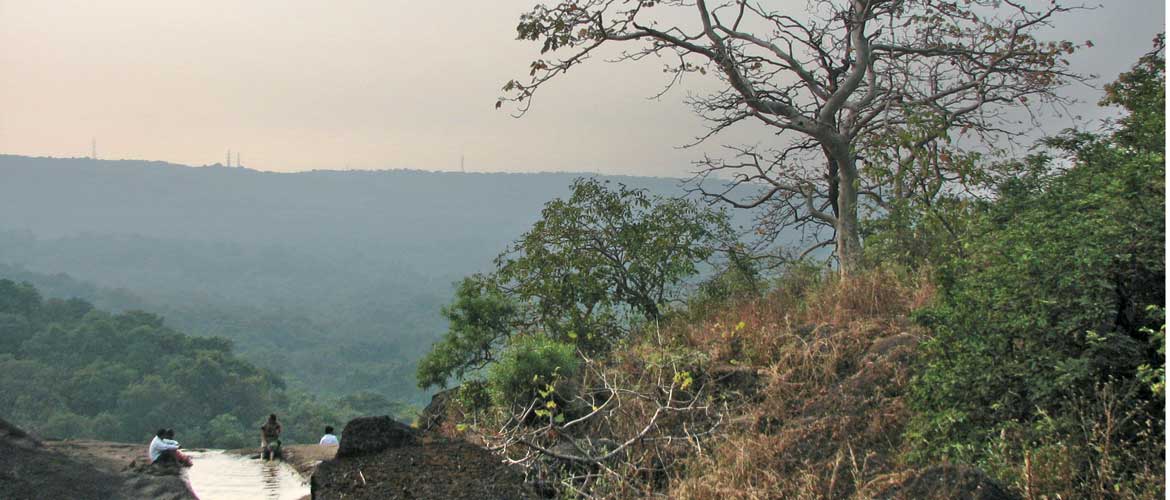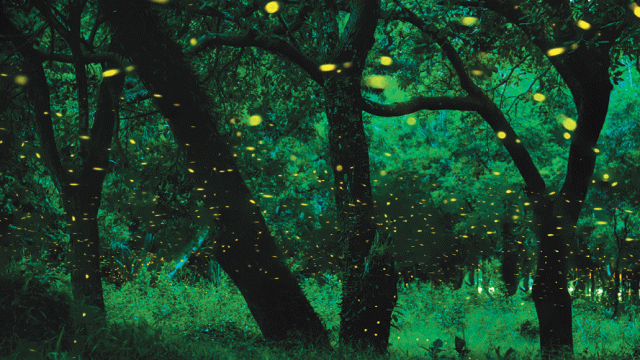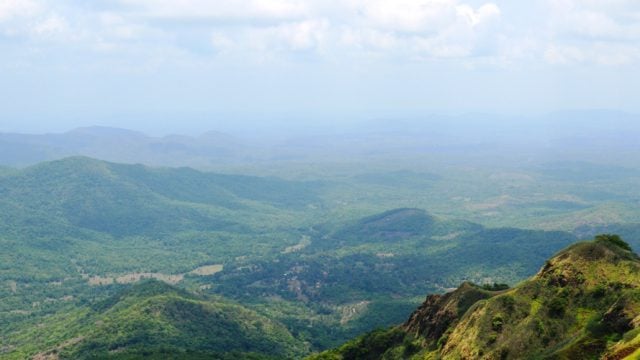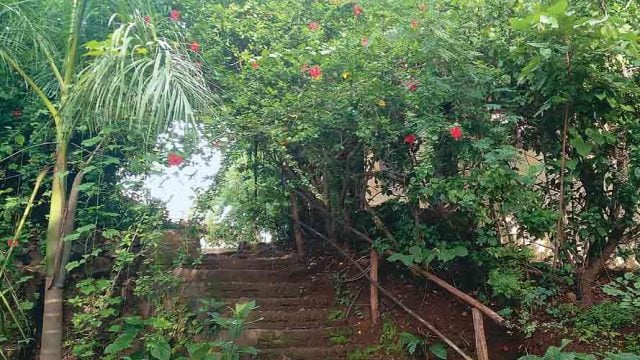The Sanjay Gandhi National Park (SGNP) is the only national park in the world that
The park has a staggering 2.5 lakh visitors every year, so it may not have the kind of tranquillity you expect, except in its more remote corners, where you can go only if you do a bit of planning and get special permission. Squashed between Mumbai and Thane, the pressure from humans on SGNP, or Borivali National Park as it is more popularly known, is immense. Between encroachments (slums and high-rises) and the mining lobby, it’s really a miracle it exists at all.
Walking through it is magic, especially when you take a moment to survey the park from a slight elevation from the famous monastic Buddhist caves at Kanheri. The verdant expanse before you, the ancient volcanic rock of the caves behind you and the crisp forest air filled with birdsong makes even a lingering memory of the city disappear. And then, of course, there is that enchanted ingredient, the big cats. There are an estimated 40 leopards in SGNP (often sighted by day), not to mention a solitary tigress said to have wandered in through the corridors from the adjacent Tungareshwar Sanctuary.
Their presence – pugmarks, scats, scratch marks on tree trunks, the occasional putrefying kill – electrifies the park in a way only apex predators can. Sadly, the leopard-human conflict in SGNP has escalated in recent years, with over 75 human fatalities since 1986. But this hasn’t deterred locals from coming here for their morning walk, yoga or spiritual sustenance. However politicised the issue has become, it seems the majority of Mumbai’s citizens want the park protected, with the leopards kept in and human encroachments (the main cause of leopard attacks) and quarries kept out.

The lakes fall in the core area where visitors are not allowed, though there are a number of forest trails through cactus-lined rocky roads and dense woodland. Tours conducted by naturalists through these areas can be arranged by special permission. It is much better to plan ahead if you’re interested in an authentic wildlife experience. Having said that, there is still plenty to do here if you just land up, though it will have a ‘picnic’ feel.
About Sanjay Gandhi National Park
The park’s history dates back to the 4th century BCE, but it was only in 1945, when the Forest Department came into existence in pre-Independence India that it began to be properly managed. In ancient India, Sopoara and Kalyan were two ports in the vicinity that traded with ancient civilisations. Originally known as Krishnagiri (literally, Black Mountain) National Park, the reserve was expanded beyond its 20.20sq km spread to its present-day dimensions of 103sq km and rechristened Borivali National Park in 1969. In 1981, it was given the name that it bears today, Sanjay Gandhi National Park.
A substantial part of the park’s area (40sq km) is located within the limits of a metropolis. While this proximity is beneficial for tourists, the hazards outweigh the benefits. The park receives an estimated 8,000–10,000 visitors every day. This number increases to one lakh during Shivratri, when devotees throng the Mahadeo Temple near the Kanheri Caves.
In November 2003, and again in June-July 2004, leopard attacks on human settlements resulted in the death of as many as 10 people. Illegal encroachments by builders and locals have eaten into the park’s forest space, thereby creating the ground for man-animal conflict. It was the search for food that drove the leopard (not a man-eater by instinct) to hunt in human settlements, finding in the process that humans are easy prey.

Although higher boundary walls have been constructed around the reserve, the core problem is yet to be tackled.
In addition to this, the existence of stone quarries and breweries in the park’s vicinity pose a serious threat to wildlife. While a few efforts have been made by the government and institutions such as the Bombay Environmental Action Group (BEAG), much is to be done.
The park is spread over 103sq km and has an incredible diversity of butterfly and bird species. There are two lakes here – Vihar and Tulsi – that serve as a source of water for Mumbaikars. The park’s core area forms the catchment area of the lakes and is off-limits for visitors. Access to the park is from the Western and Eastern Express Highways. It is, however, advisable to follow the route along the Western Express Highway and to approach the park from the Borivali side where the park’s headquarters are located.
The Nature Interpretation Centre is a 5-minute walk eastwards from the main entrance. It also has a butterfly garden.
Entry ₹ 44 Timings 5.00–7.30am for morning walkers (no entry fee) and 7.30am–6.00pm for visitors Vehicle ₹ 146; Two-wheeler ₹ 37; HMV ₹ 220
Tip It’s warm throughout the year. Wear proper walking shoes with socks and long trousers. Carry a raincoat during the monsoons.
Things to See & Do
Spotting a leopard could be the highlight of your tour. The park is home to the spotted deer, sambar, barking deer, black-naped hare, porcupine, palm civet, striped hyena, four-horned antelope, mouse deer, rhesus macaque, bonnet macaque, Hanuman langur and leopard. The Indian flying fox is the biggest of the 17 bat species found in the park. You can also spot a lot of rare and exotic birds in the park. Tickell’s flowerpecker, sunbirds, White-bellied sea eagle, paradise flycatcher, trogon, parakeet, kingfisher, woodpecker, brown-headed barbet, racket-tailed drongo, blue flycatcher and Malabar whistling thrush and spotted babbler are some of the commonly sighted birds. Amongst reptiles, you can come across monitor lizards, crocodiles in Tulsi lake, pythons, cobras, Russell’s viper, bamboo pit viper and Ceylonese cat snake.

Besides, the park is home to a variety of invertebrates, such as crabs, giant wood spiders, signature spiders and black-wood spider.
The park has about 1,300 species of flowering plants. There are several medicinal plants here that are used in Ayurveda. It is a must-see destination for naturalists, students and wildlife photographers. It will be easier to identify fauna and flora if you hire a guide; do remember to carry binoculars.
Nature Information Centre
The Nature Information Centre is a road map to the park’s biodiversity. The centre has exhibits and a three-dimensional model of the park. You can also opt for a half-day programme here, which will include a nature trail with a guide, film screenings, slide shows and quizzes. The purpose is to inform, educate and inspire people to conserve nature. The centre has a butterfly garden and well-informed naturalists as part of their staff. If you wish to undertake a guided excursion, it’s advisable that you book or intimate the centre in advance about your tour plans.
Closed Mondays
Park tours
Guided tours are conducted on select trails, some of which are otherwise off-limits for casual visitors to the park. Confirm the dates of tours in advance.
Conducted Tour Children ₹ 75; College Students ₹ 50; Group of 10 ₹ 1,000 Timings 7.30am–11.00am
Tiger Safari
Though its lions and white tigers are housed in large enclosures that tourists drive through in closed vans, it’s as if the animals are in cages.
Entry Children ₹ 23; Adults ₹ 58 Timings 9.00am–4.30pm
Kanheri Caves
Take the shuttle or walk 7km from the main gate to the 1,000-year-old Buddhist monastic settlement carved into volcanic rocks at Kanheri. You can also cycle up to here. There are pillared corridors of prayer halls and 108 monk cells (now apparently a favourite haunt of leopards at night) connected by narrow walkways. An incredible network of canals harvest rainwater and fill the water tanks in each cell.
A steep trek (permission required) from the caves takes you to the highest point in the park.
Entry ₹ 5 per person; Timings 9.00am–5.00pm Shuttle fee Children ₹ 23, Adults ₹ 44; the last return shuttle from the caves to the main entrance is at 5.00pm
Yeur Hills
These hills are located towards the eastern section of the park, on the Thane side. Over 70 species of birds as well as the leopard can be spotted in this area.
Boating
Pedal boating in duck-shaped contraptions on the reservoir formed by the Dahisar River Dam, a 5-minute walk from the main gate, is an exciting activity for children.
Fee ₹ 44 per person Timings 9.00am–5.30pm
Rock climbing, rappelling
A number of groups organise rock climbing and rappelling trips near the Kanheri Caves.
These activities have different difficulty levels – the altitude for rappelling varies from a height of 50–70ft for beginners to 150–200ft for advanced level sport enthusiasts.
Rapelling ₹ 600 for a minimum group of ten. Rate includes trainer, equipment and activity charges. Food and transport on request. They offer segway tours Timings 7.30–10.00am Bookings Ecomantra Tel: 022-24180748, 09833377870/ 74 ecomantra.com
Where to Stay & Eat
Although there are some Forest Rest Houses (FRHs) run by the forest department in the Sanjay Gandhi National Park, these are made available to the public only when they are not booked by visiting officials. The chances of getting a room in the FRHs are slim, making a stay in the city the only alternative. All food stalls have been removed from the park, except the one at the Kanheri Caves.
Quality is not a strong point, so if you’re picky, bring your own. Keep some snacks with you as well. Don’t forget to take your garbage back with you; plastic waste left by tourists is a huge problem here.
Around Sanjay Gandhi National Park
Tungareshwar National Park
The SGNP is split into two by the Bassein Creek, at the north of which lies the Nagla block of the park, almost contiguous with the Tungareshwar National Park. Together the SNGP and Tungareshwar comprise almost 200sq km of forestland and include the six lakes that provide Mumbai with water. In 2003, a tiger was sighted in Tungareshwar, creating much excitement and prompting the government to give it national park status later in the year. The huge number of visitors to the Mahadeo Temple in the park disturbs wildlife. The forest has over 500 plant species, 150 species of butterflies and 150 species of birds.
Inputs by Chanpreet Khurana
Getting There
Rail It’s a 40-minute ride from Churchgate Station in south Mumbai to Borivali. A 10-minute walk from the east side of Borivali Station (1km) takes you to the SGNP entry gate
Road From south Mumbai, it’s roughly a 2-hr-long drive (depending on traffic) along the Western Express Highway. From Colaba, drive north along the Shaheed Bhagat Singh Road and where the road bifurcates, take the DN Road. Head for Matunga Road, which connects with the Western Express Highway. Follow the highway upto Borivali and then take a sharp right for SGNP. Drive straight past the Jung Marg crossing to reach the park entrance
Fast Facts
When to go Open all year round, but the best time is from November to February. For birdwatchers, winter is the ideal time to visit. But the park is especially gorgeous in the hot, dry summer months, when the gulmohar, silk cotton and flame-of-the-forest burst into crimson bloom. Monsoon (June to September) is the time for babbling brooks, pretty waterfalls and incredibly lush vegetation. The park places an array of choices before visitors as each season brings with it a range of picturesque sights and adventures peculiar to it.
Go there for Leopards, sunbirds
SGNP Information Centre
Nature Information Centre
Sanjay Gandhi NP, Borivali East
Mumbai-400066. Tel: 022-28868686
Email: [email protected]
Wildlife/ Forest Dept Office
Chief Conservator of Forests
Borivali, Mumbai
Sanjay Gandhi NP, Borivali East
Tel: 28866449, 28860362/ 89
sgnp.mahaonline.gov.in
STD code 022
State Maharashtra
Location On the northern boundary of suburban Mumbai, off the Western Express Highway; flanked by Goregaon and Malad in the west and Bhandup and Mulund in east
Distance 30km NE of Colaba
Route from south Mumbai Colaba (Shaheed Bhagat Singh Road) to Mahim; Mahim Causeway to Bandra; Western Express Highway to Borivali.
Mumbai
OT Getaway Guides
Sanjay Gandhi National Park





